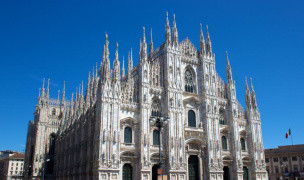 13 Terms
13 TermsHome > Terms > Kazakh (KK) > литография
литография
A printing process based on the antipathy of grease and water. The image is applied to a grained surface (traditionally stone but now usually aluminium) using a greasy medium: greasy ink (tusche), crayon, pencils, lacquer, or synthetic materials. Photochemical or transfer processes can be used. A solution of gum arabic and nitric acid is then applied over the surface, producing water-receptive non-printing areas and grease-receptive image areas. The printing surface is kept wet, so that a roller charged with oil-based ink can be rolled over the surface, and ink will only stick to the grease-receptive image area. Paper is then placed against the surface and the plate is run through a press. Lithography was invented in the late eighteenth century, initially using Bavarian limestone as the printing surface. Its invention made it possible to print a much wider range of marks and areas of tone than possible with earlier printmaking techniques. It also made colour printing easier: areas of different colours can be applied to separate stones and overprinted onto the same sheet. Offset lithography involves printing the image onto an intermediate surface before the final sheet. The image is reversed twice, and appears on the final sheet the same way round as on the stone or plate.
- Part of Speech: noun
- Synonym(s):
- Blossary:
- Industry/Domain: Art history
- Category: General art history
- Company: Tate
- Product:
- Acronym-Abbreviation:
Other Languages:
Member comments
Terms in the News
Featured Terms
Contributor
Featured blossaries
Browers Terms By Category
- Organic chemistry(2762)
- Toxicology(1415)
- General chemistry(1367)
- Inorganic chemistry(1014)
- Atmospheric chemistry(558)
- Analytical chemistry(530)
Chemistry(8305) Terms
- Cosmetics(80)
Cosmetics & skin care(80) Terms
- Manufactured fibers(1805)
- Fabric(212)
- Sewing(201)
- Fibers & stitching(53)
Textiles(2271) Terms
- Hair salons(194)
- Laundry facilities(15)
- Vetinary care(12)
- Death care products(3)
- Gyms(1)
- Portrait photography(1)
Consumer services(226) Terms
- Material physics(1710)
- Metallurgy(891)
- Corrosion engineering(646)
- Magnetics(82)
- Impact testing(1)





